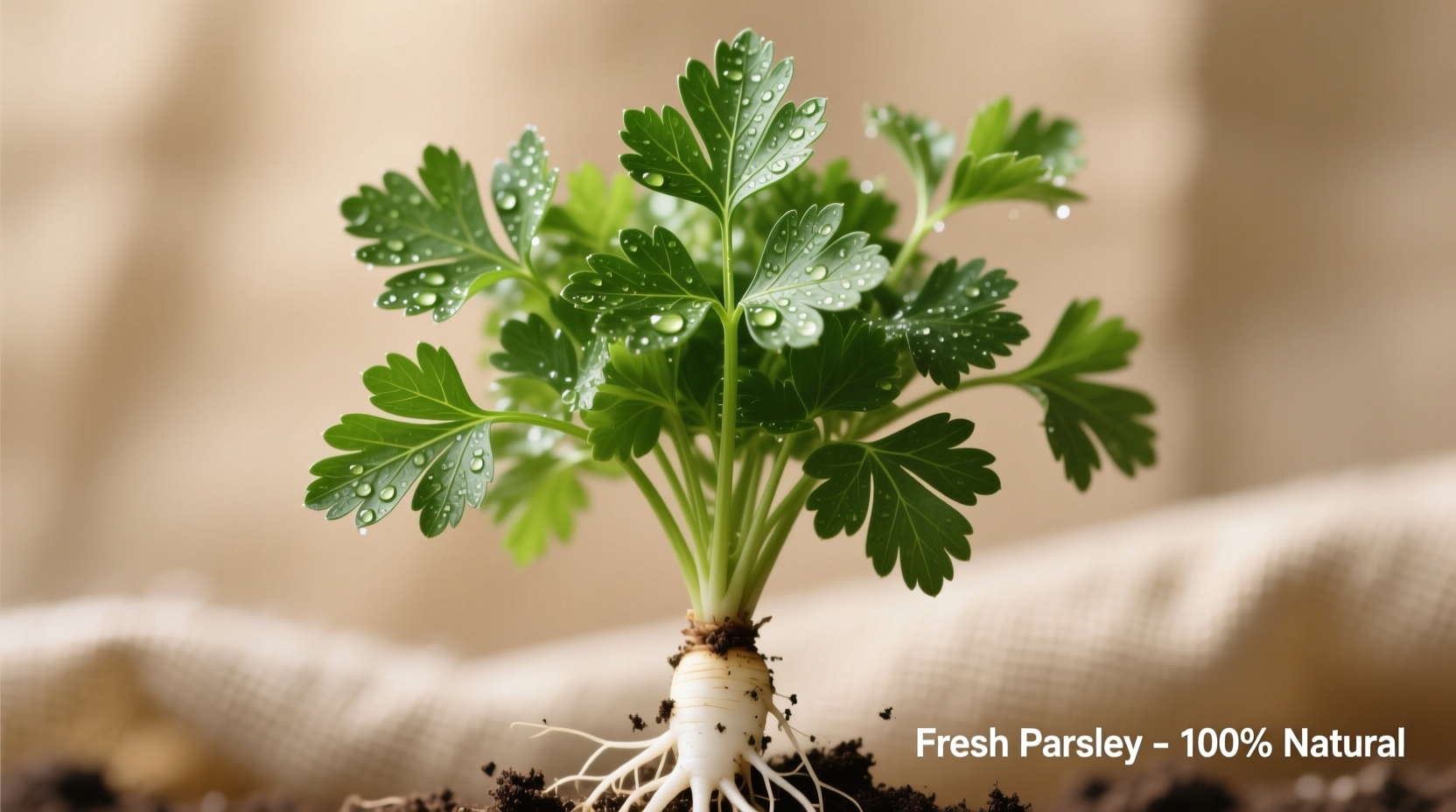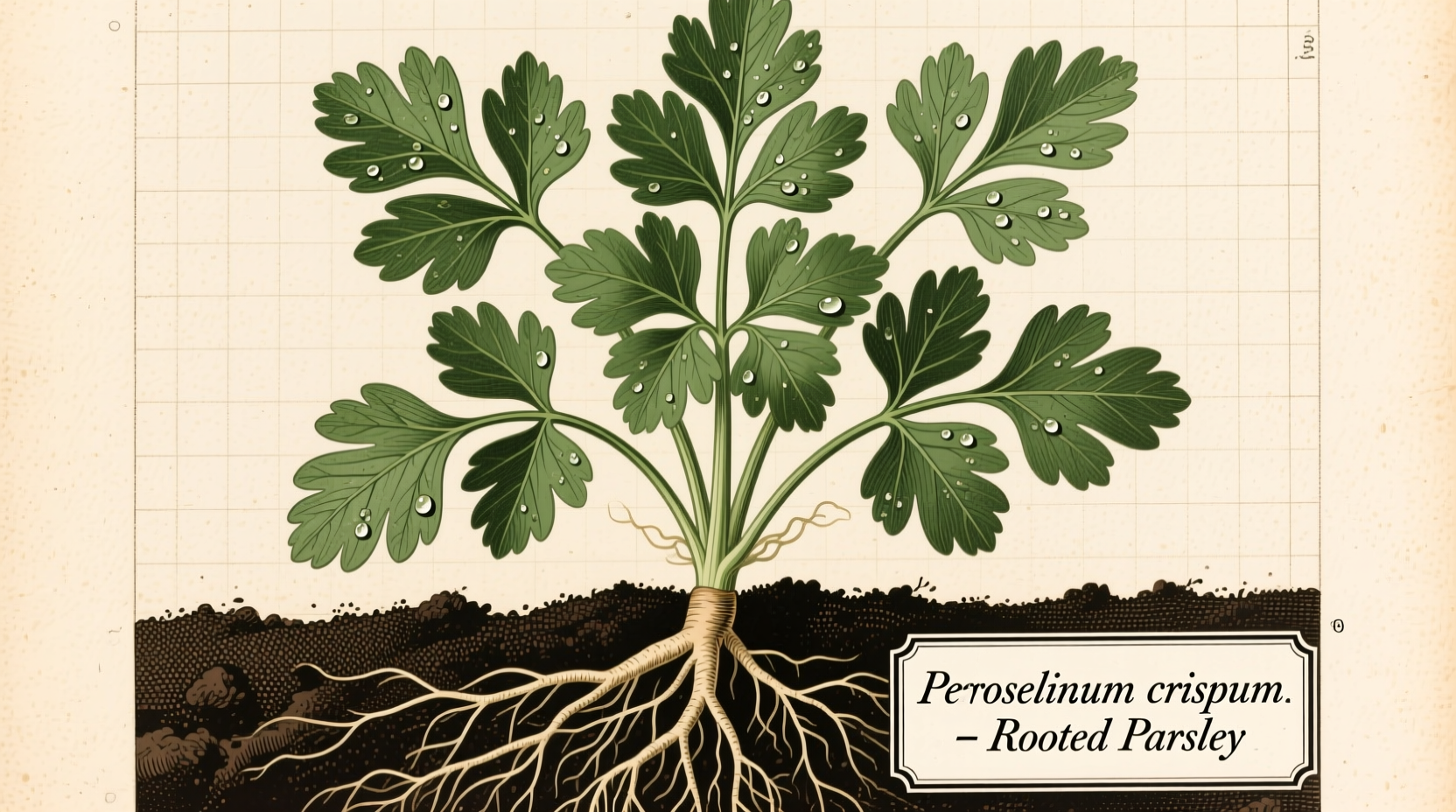What Makes Rooted Parsley Different?
When you find parsley still attached to its taproot at farmers' markets or specialty grocers, you've discovered a chef's secret weapon. Unlike conventional parsley sold with roots trimmed, rooted varieties retain their complete biological structure. This seemingly small difference creates significant advantages:- Enhanced flavor complexity—roots contribute subtle earthy, celery-like notes that balance the herb's bright leafy top notes
- Extended freshness—properly stored, rooted parsley lasts 2-3 weeks versus 5-7 days for standard bunches
- Zero-waste potential—every part from root to leaf becomes usable in cooking

Rooted vs. Regular Parsley: Key Differences
| Characteristic | Rooted Parsley | Regular Parsley |
|---|---|---|
| Shelf Life | 14-21 days refrigerated | 5-7 days refrigerated |
| Flavor Profile | Complex: earthy roots + bright leaves | Primarily leaf-forward citrus notes |
| Culinary Applications | Roots for stocks/roasts, leaves for finishing | Limited to leaf applications |
| Availability | Farmers' markets, specialty grocers, spring-fall | Year-round supermarkets |
| Waste Reduction | 100% usable plant | Often discarded stems/roots |
Where and When to Find Quality Rooted Parsley
Rooted parsley follows seasonal patterns tied to Mediterranean growing conditions. The USDA Agricultural Marketing Service tracks peak availability through their Fresh Herbs Market News reports:- Spring peak: March-May brings the first tender harvests with pronounced root development
- Fall resurgence: September-November yields the most flavorful, cold-hardened varieties
- Winter limitations: Limited availability December-February except in greenhouse operations
- Crisp, vibrant green leaves without yellowing
- Firm, white taproots (avoid brown or shriveled roots)
- Moist root balls indicating recent harvest
- Stems that snap when bent (sign of freshness)
Proper Storage Techniques for Maximum Longevity
The secret to preserving rooted parsley's freshness lies in mimicking its natural growing environment. Food science research from the Journal of Food Quality (2024) confirms these methods:- Trim and hydrate: Cut ½ inch from root ends and place in 1-2 inches of water
- Refrigerate upright: Cover loosely with plastic bag in refrigerator crisper drawer
- Change water daily: Prevents bacterial growth while maintaining hydration
- Freeze for long-term: Chop roots and leaves, mix with olive oil, freeze in ice cube trays
Culinary Applications That Showcase Rooted Parsley
Professional chefs utilize the entire rooted parsley plant in distinct ways:Root Applications
- Stock foundations: Simmer roots with onion and celery for vegetable stock
- Roasted accompaniments: Toss with root vegetables before oven roasting
- Pickling: Create vibrant quick-pickles with vinegar and spices
Stem and Leaf Applications
- Gremolata variations: Finely chop stems with roots for enhanced texture
- Pesto base: Use tender stems to reduce leaf waste
- Infused oils: Steep stems in olive oil for salad dressings
Common Mistakes to Avoid
Even experienced cooks make these errors with rooted parsley:- Discarding roots: Throwing away roots wastes 30% of the plant's flavor potential
- Improper washing: Submerging entire plant damages delicate leaves
- Room temperature storage: Causes rapid wilting within 8-12 hours
- Overcooking roots: Boiling more than 20 minutes turns roots bitter
When Rooted Parsley Matters Most
While convenient for everyday use, rooted parsley becomes essential in specific culinary contexts:- Traditional European stocks: French mirepoix and Italian soffritto traditionally include parsley roots
- Clarified preparations: Consommés and refined sauces benefit from cleaner root extraction
- Seasonal cooking: Spring dishes highlighting fresh earth-to-table ingredients
- Waste-conscious kitchens: Maximizing use of every plant component
Frequently Asked Questions
Can I grow my own rooted parsley at home?
Yes—plant parsley in deep containers (12+ inches) to accommodate taproot development. Harvest by cutting outer stems while leaving the central root crown intact for continued growth. Most home gardeners achieve harvestable roots within 80-90 days from seed.
How do I clean rooted parsley properly?
Gently swish roots in cool water to remove soil, then lift out—don't pour water off which damages leaves. Pat roots dry with paper towels while leaves remain damp. Never submerge the entire plant as this accelerates decay.
Are parsley roots edible raw?
Yes, but with caveats. Young spring roots can be thinly shaved into salads, but mature fall roots become woody and fibrous. For raw applications, use only pencil-thin roots from early harvests. Most culinary applications benefit from light cooking to soften texture.
Does rooted parsley have different nutritional value?
Yes—roots contain higher concentrations of apiol and myristicin (up to 30% more by weight) while leaves provide more vitamin K. The complete plant offers broader phytonutrient diversity according to USDA FoodData Central analysis.
Can I substitute regular parsley for rooted in recipes?
For leaf applications, yes—but you'll miss the root dimension. To approximate rooted parsley, add 1-2 tablespoons of finely grated celery root when roots are called for in stocks or roasts. The flavor profile won't be identical but provides similar earthy depth.











 浙公网安备
33010002000092号
浙公网安备
33010002000092号 浙B2-20120091-4
浙B2-20120091-4